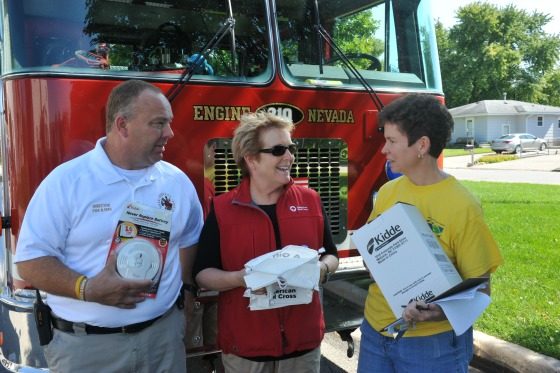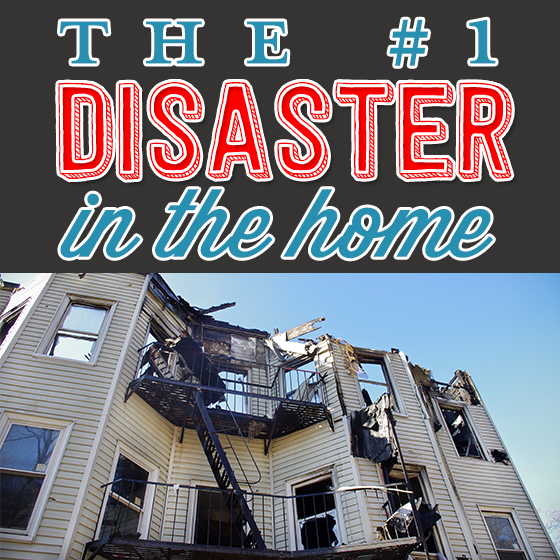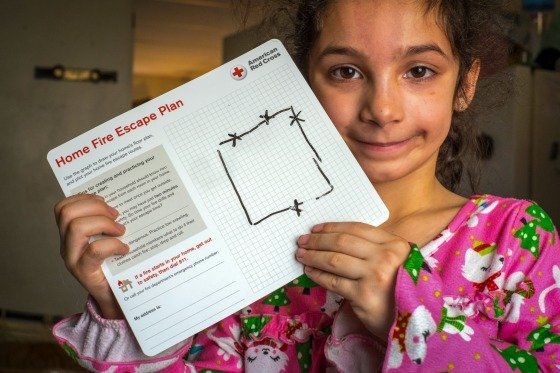Despite the most common preventive measures, house fires are still the #1 disaster in the family home out of the 66,000 disasters that occur each year. Gail McGovern shares her insight as the CEO and president of the American Red Cross since 2008 that has helped save lives across the country. One hero was just 5 years old because she remembered the teachings of the Red Cross.
Hear her insight and what you can do to make sure you and your little ones get to safety in under 2 minutes.
What would you say is an emergency that you see occur the most in the family home and how does the Red Cross respond?
Gail: The Red Cross actually responds to 66,000 disasters on average every single year and that’s one every 8 minutes. Most of them are home fires, and home fires are responsible for more deaths and injuries than any large natural disaster that has happened since 1938. So the biggest disaster that we are dealing with day-in and day-out are home fires. And there are so many ways these can be prevented and so many ways that death and injury can be prevented by families being prepared.
So, how can a family prepare for a disaster like this: the home fire?
Gail: Two things: make sure that they have a working smoke alarm – it’s essential, they save lives; and the second thing is an evacuation plan. We recently did a survey and we found that 75% of people surveyed think that they have five minutes or more to get out of the house. You have two minutes or less; that’s how fast a home will go down! So, you’ve got to figure out an evacuation plan that will be under 2 minutes; you know who’s going to grab the kids, you know who’s going to grab the pets, and you know which doors you’re going to walk out of.
It’s also good to know where you’re going to meet up outside. It’s essential, and especially for families, we have found that little kids will hide in the closet. They hide in the closet when the smoke alarm goes off, so they need to be taught what they need to do to get out of that house in 2 minutes.
We have started a large campaign where we are going to vulnerable communities and helping install smoke alarms. Already 92 lives have been saved, and 4 of those lives were saved by a 5 year old girl who remembered what we taught her during these fire drills. She got her family out. So it’s just practicing those drills. We all think our kids know what to do – they don’t. We need to teach them, get them prepared, get them to be fearless, and get them out of the house.

When it comes to national or even local disasters like you just mentioned – teaching our kids and demonstrating how to do it, what else can parents do to teach their kids about helping out – getting involved?
Gail: I believe that what family should do first is get their kids to start volunteering early. One of the lives that was saved when we did our smoke alarm campaign was installed by a Boy Scout. We had a Red Cross worker with him, and this young Boy Scout was getting his preparedness badge and wanted to participate, and lo and behold, he saved a life. So get kids to volunteer young and also get them to be philanthropic.
I know that may sound strange for young children, but they’re going to be tomorrow’s philanthropist, so get them to raise money for causes that they care about, and Red Cross can always use financial gifts. A young person giving a dollar; a dollar would be a gift that is very appreciative. And I gotta say, one of the most touching things that happened to me at the Red Cross was a letter I got from a seven-year-old boy. It had a crumpled up dollar bill in it and it said “This is from the Tooth Fairy. Please use it to help people.” Teaching your kids to give back, teaching your kids to volunteer, teaching them what to do in the event of a disaster — all these things are essential.
Any other personal memories?
Gail: I see that over and over again. There was a child who was doing manicures – they weren’t very good ones, but she was doing manicures to raise money for the earthquake that struck Japan a few years ago. There was a young boy who stood on the street corner and played guitar with a jar for donations. He was 14 years old and he was raising money for the American Red Cross. Kids are very powerful.
We actually have a very big program called the Pillowcase Project where we are teaching kids what they would put in a pillowcase as a “go kit” – you know, what kind of emergency supplies they would need in case of a disaster. It’s part of the school curriculum that’s geared towards 1st to 3rd graders. What I love about it is they go home and they nag their parents to get prepared. It’s a wonderful program.
Are these programs in most schools across the country?

Gail: We’re getting there. We’ve already trained 471,000 kids on what to do to be prepared. We’re excited about it because kids are compelling – they’re great spokespersons for what needs to happen in family preparedness. And grownups can help too. We are always in sore need of financial donations and we always could use grown-up volunteers. Grownups can donate blood also.
Is there a place to go for more information to find out where to help?
Gail: Yes, redcross.org is the website where you can find ways to help. We also have a slew of free apps that people can download to their smartphones. It’s what to do in every kind of disaster you can imagine – how to prepare, how to deal with disasters when they strike, and how to recover.
We have a wonderful app that every parent should have, called The First Aid App. It’s in alphabetical order which will tell you exactly what to do if your kid is in distress. Everything from allergies to broken bones to bee stings; and there’s a video showing you what to do if your kid is choking. It’s an essential must have and when you read the reviews, people talk about saving lives with their phones.
It’s great for babysitters too. Make sure the babysitter has that app on his or her smartphone.
This is available through the app store?
Gail: Yes, at the Apple Store, the Samsung store and it’s available on any kind of smartphone. You just have to search for First Aid, then there is the Red Cross First Aid App. Information about the app is also available on our website redcross.org.
Anything else you’d like to add?
Gail: I just want to thank all of your viewers in advance for their support of the American Red Cross. The American public has always been generous to us, so I want to just give a big thank you to everybody that’s reading. Thank you so much and it’s a privilege.

Thank you to Gail McGovern, for what you’re doing with the Red Cross since 2008. Thank you for your dedication and spreading the word of how to help and save a life.
If you’ve ever wanted to donate blood for the Red Cross, here are 5 Surprising Reasons To Do So.
Photo credits: Redcross.org, Andrew Gaines on Unsplash











































